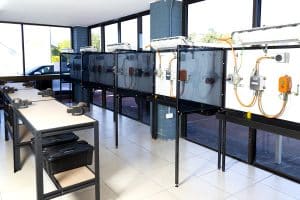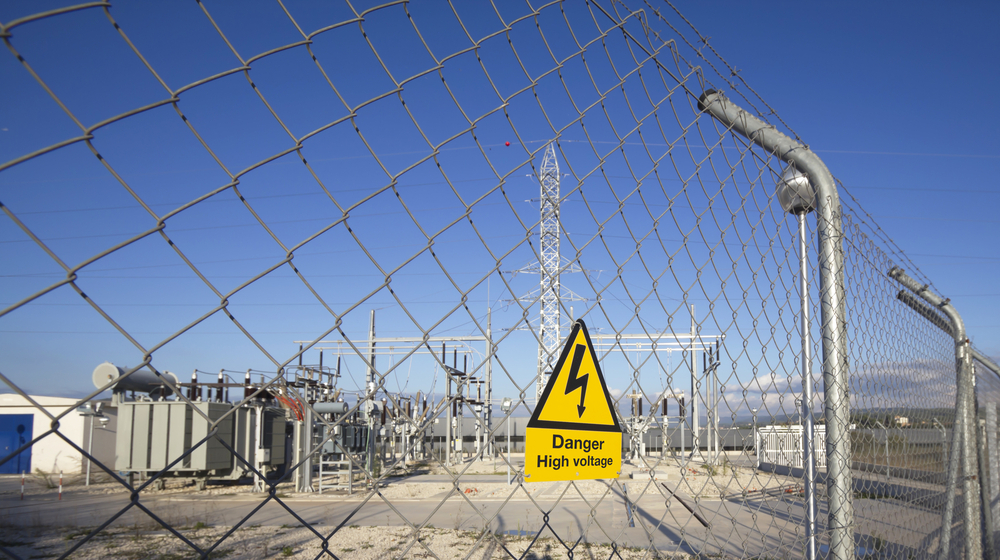The Roar Solutions Statements
The Roar Solutions Statements
Blog Article
An Unbiased View of Roar Solutions
Table of ContentsThe Best Strategy To Use For Roar SolutionsSome Ideas on Roar Solutions You Need To KnowRoar Solutions Fundamentals Explained
In order to safeguard setups from a potential explosion a technique of evaluating and categorizing a potentially harmful area is called for. The function of this is to make certain the right choice and installment of devices to inevitably prevent an explosion and to ensure safety of life.
(https://filesharingtalk.com/members/606050-roarsolutions)
No equipment ought to be installed where the surface area temperature level of the equipment is above the ignition temperature of the provided danger. Below are some common dirt harmful and their minimal ignition temperature. Coal Dirt 380C 225C Polythene 420C (melts) Methyl Cellulose 420C 320C Starch 460C 435C Flour 490C 340C Sugar 490C 460C Grain Dust 510C 300C Phenolic Resin 530C > 450C Aluminium 590C > 450C PVC 700C > 450C Soot 810C 570C The chance of the risk being existing in a focus high adequate to create an ignition will certainly differ from area to location.
In order to identify this threat a setup is separated right into areas of risk relying on the amount of time the harmful is present. These areas are referred to as Zones. For gases and vapours and dirts and fibres there are three zones. Area 0 Area 20 A dangerous environment is extremely most likely to be present and may exist for lengthy periods of time (> 1000 hours per year) or even continuously Zone 1 Area 21 A hazardous atmosphere is possible however unlikely to be present for long periods of time (> 10 450 C [842 F] A classification of T6 suggests the minimal ignition temperature level is > 85 C [185 F] Harmful location electric devices perhaps designed for use in higher ambient temperature levels. This would suggested on the score plate e.g. EExe II C T3 Ta + 60C( This indicates at 60C ambient T3 will not be surpassed) T1 T1, T2, T3, T4, T5, T6 T2 T2, T3, T4, T5, T6 T3 T3, T4, T5, T6 T4 T4, T5, T6 T5 T5, T6 T6 T6 A T Course rating of T1 implies the maximum surface area temperature level generated by the instrument at 40 C is 450 C. Assuming the associated T Course and Temperature level score for the tools are proper for the area, you can constantly make use of an instrument with an extra strict Department rating than needed for the location. There isn't a clear response to this inquiry regrettably. It truly does depend upon the kind of devices and what repair services require to be accomplished. Equipment with specific test treatments that can not be executed in the area in order to achieve/maintain third party rating. Need to return to the manufacturing facility if it is before the equipment's service. Area Repair By Authorised Employee: Difficult testing might not be required however specific treatments might need to be followed in order for the equipment to keep its 3rd event ranking. Authorised workers should be used to perform the job appropriately Repair must be a like for like replacement. New component need to be thought about as a straight substitute needing no special testing of the tools after the repair service is total. Each tool with a harmful score need to be assessed separately. These are described at a high level below, but also for even more detailed details, please refer straight to the standards.
The Roar Solutions Diaries
The devices register is a comprehensive database of tools records that consists of a minimum set of fields to determine each thing's location, technical specifications, Ex classification, age, and environmental data. This information is vital for tracking and handling the equipment properly within dangerous locations. On the other hand, for routine or RBI tasting evaluations, the quality will be a mix of Detailed and Close examinations. The proportion of In-depth to Close inspections will be determined by the Devices Risk, which is examined based upon ignition danger (the chance of a resource of ignition versus the probability of a combustible ambience )and the unsafe location classification
( Area 0, 1, or 2). This variant will also influence the resourcing demands for work prep work. Once Whole lots are defined, you can establish tasting plans based on the sample size of each Whole lot, which describes the number of random devices things to be checked. To identify the called for example size, 2 facets require to be reviewed: the dimension of the Whole lot and the category of examination, which suggests the level of effort that need to be applied( minimized, regular, or increased )to the assessment of the Great deal. By combining the group of evaluation with the Great deal size, you can after that establish the appropriate denial requirements for an example, implying the allowed variety of defective things discovered within that example. For more information on this process, please describe the Energy Institute Standards. The IEC 60079 basic suggests that the maximum interval in between evaluations should not exceed three years. EEHA examinations will likewise be performed beyond RBI projects as component of scheduled upkeep and tools overhauls or repair services. These evaluations can be credited towards the RBI sample dimensions within the impacted Great deals. EEHA examinations are conducted to identify mistakes in electrical tools. A weighted scoring system is crucial, as a single piece of equipment may have multiple faults, each with differing levels of ignition danger. If the consolidated score of both inspections is much less than two times the mistake score, the Whole lot is considered appropriate. If the Whole lot is still thought about inappropriate, it must go through a full examination or reason, which might trigger more stringent inspection methods. Accepted Whole lot: The root causes of any type of faults are identified. If an usual failure mode is found, added equipment may call for maintenance. Faults are identified by extent( Safety, Honesty, Home cleaning ), ensuring that immediate issues are assessed and dealt with without delay to alleviate any type of effect on safety or procedures. The EEHA data source ought to track and tape-record the lifecycle of faults along with the restorative activities taken. Executing a durable Risk-Based Evaluation( RBI )strategy is important for guaranteeing conformity and security in managing Electric Devices in Hazardous Areas( EEHA) (eeha courses). Automated Mistake Scoring and Lifecycle Monitoring: Effortlessly take care of faults and track their lifecycle to enhance assessment precision. The introduction of this Check Out Your URL assistance for risk-based inspection additionally reinforces Inspectivity's setting as a best-in-class remedy for governing conformity, in addition to for any kind of asset-centric examination use situation. If you have an interest in discovering more, we welcome you to ask for a demo and discover how our service can transform your EEHA management processes.
8 Easy Facts About Roar Solutions Described

In regards to eruptive danger, a hazardous area is an environment in which an explosive atmosphere exists (or may be expected to be existing) in quantities that need special preventative measures for the building, setup and use tools. eeha. In this short article we discover the obstacles dealt with in the workplace, the threat control actions, and the required expertises to function safely
It issues of modern-day life that we make, keep or handle a series of gases or fluids that are deemed flammable, and a variety of dirts that are deemed combustible. These materials can, in specific conditions, create eruptive ambiences and these can have significant and unfortunate consequences. A lot of us know with the fire triangular get rid of any one of the 3 elements and the fire can not take place, however what does this mean in the context of hazardous areas? When breaking this down into its most basic terms it is basically: a mix of a specific quantity of launch or leakage of a particular compound or material, combining with ambient oxygen, and the visibility of a source of ignition.
In most circumstances, we can do little concerning the degrees of oxygen airborne, but we can have significant impact on sources of ignition, as an example electric devices. Harmful areas are documented on the harmful area category drawing and are identified on-site by the triangular "EX" indicator. Here, among other essential information, areas are split into three types depending upon the risk, the probability and duration that an explosive atmosphere will exist; Area 0 or 20 is considered one of the most harmful and Zone 2 or 22 is considered the least.
Report this page